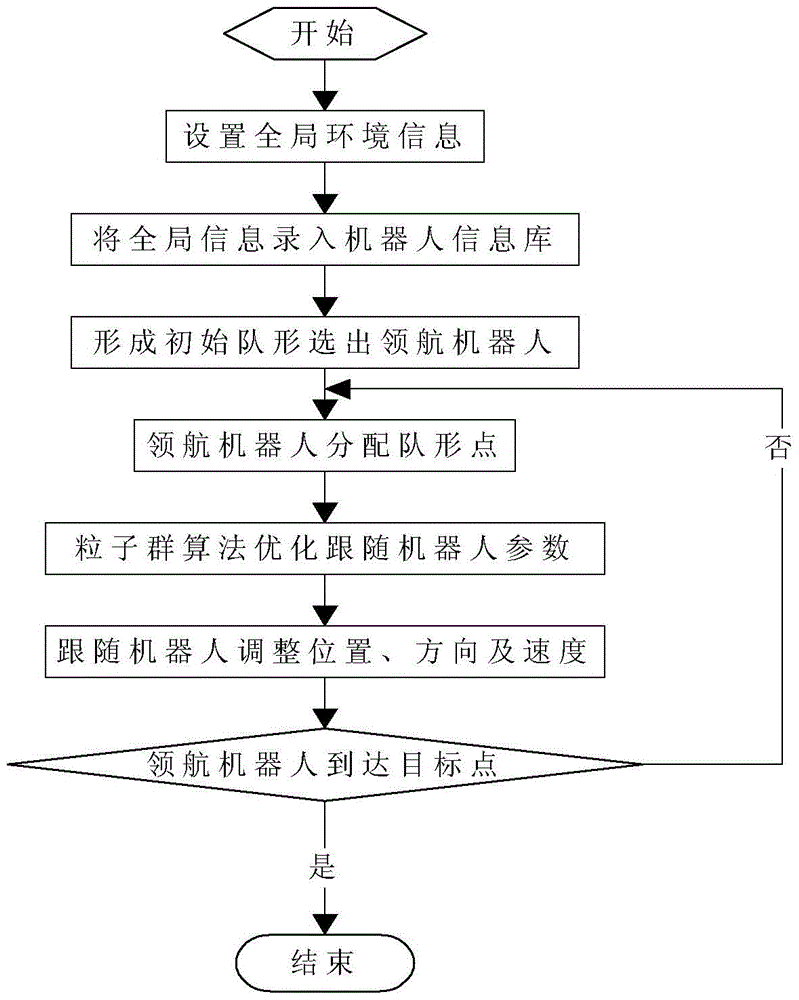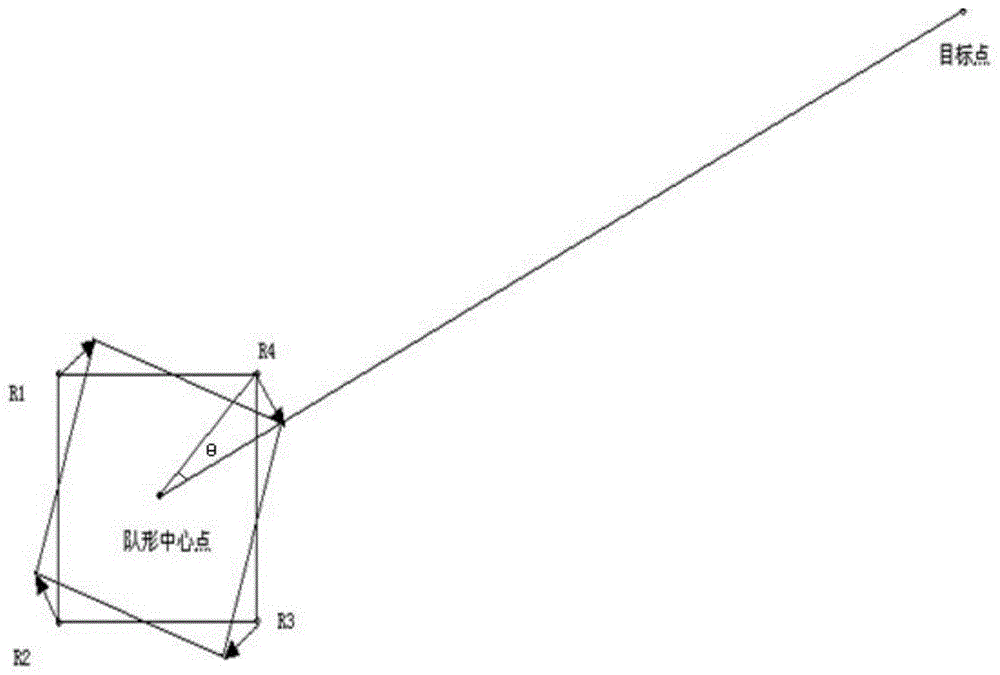A Formation Control Method of Multiple Mobile Robots Based on Improved Particle Swarm Optimization Algorithm
A mobile robot, improved particle swarm technology, applied in two-dimensional position/channel control and other directions
- Summary
- Abstract
- Description
- Claims
- Application Information
AI Technical Summary
Problems solved by technology
Method used
Image
Examples
Embodiment Construction
[0018] A non-limiting embodiment is given below in conjunction with the accompanying drawings to further illustrate the present invention.
[0019] Such as figure 1 As shown, the present invention uses the combination of the pilot follower method and the artificial potential field method to realize the formation control task of multiple robots in a static environment. The specific implementation steps are as follows:
[0020] Step 1: Abstract the actual operating environment into a plane map, and establish an environmental map based on the location and size of the obstacle. Mark the obstacle with the ID number so that the robot can detect the obstacle information and set the final target point coordinates.
[0021] Step 2: Initialize the position information of the robot in the map. Arbitrarily set four robot positions on the map, and use a circle with a radius of 1 unit to represent the robot. The robot obtains global map information through its own detector and records the inform...
PUM
 Login to View More
Login to View More Abstract
Description
Claims
Application Information
 Login to View More
Login to View More - R&D
- Intellectual Property
- Life Sciences
- Materials
- Tech Scout
- Unparalleled Data Quality
- Higher Quality Content
- 60% Fewer Hallucinations
Browse by: Latest US Patents, China's latest patents, Technical Efficacy Thesaurus, Application Domain, Technology Topic, Popular Technical Reports.
© 2025 PatSnap. All rights reserved.Legal|Privacy policy|Modern Slavery Act Transparency Statement|Sitemap|About US| Contact US: help@patsnap.com



